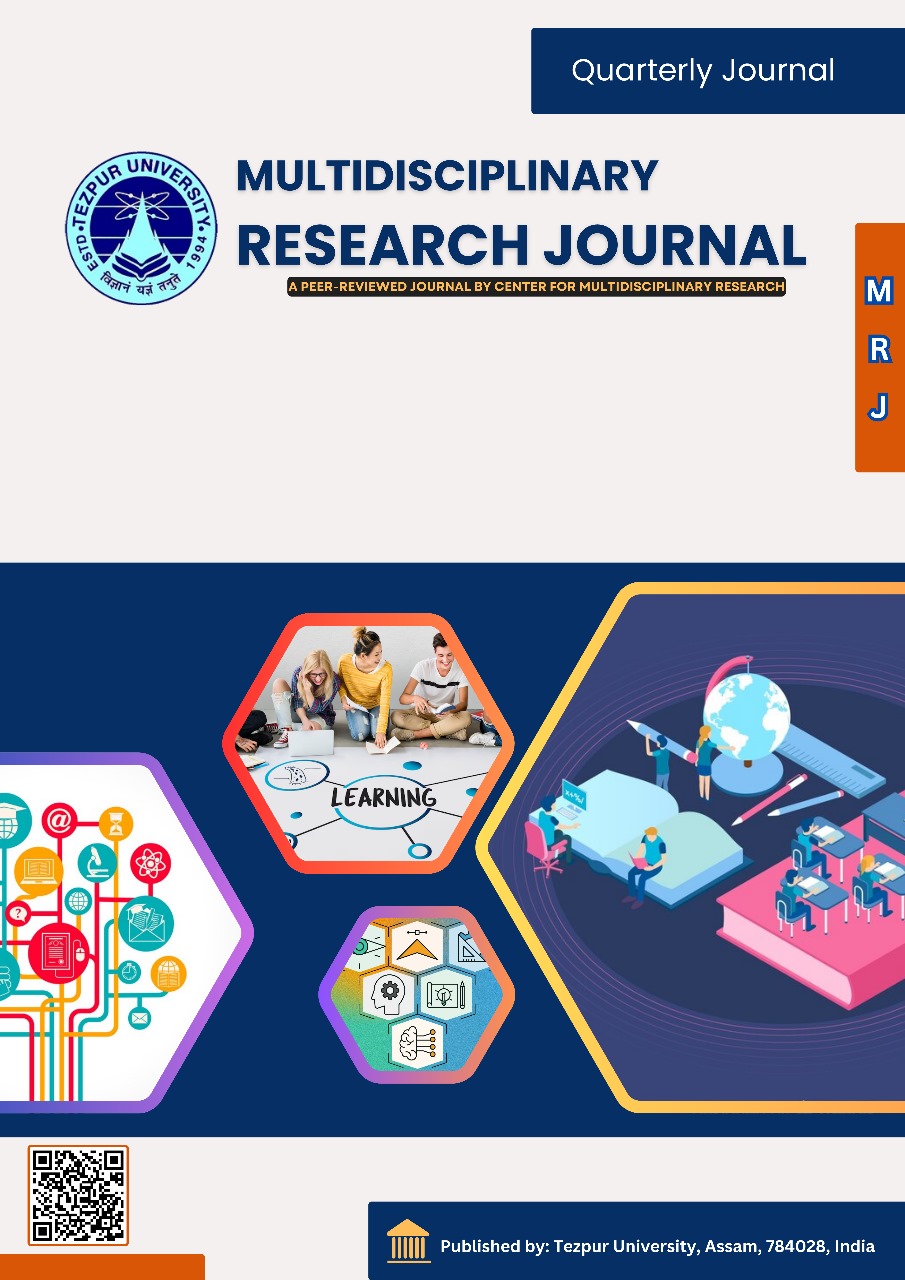Impact of Meditation on Mental Health: A Case Study with Two Meditation Practices using Heart Rate Variability
DOI:
https://doi.org/10.63635/mrj.v1i1.13Keywords:
Heart Rate Variability (HRV), Meditation, Mental Health, Autonomic Nervous System (ANS), Internet of Medical Things (IoMT)Abstract
Heart rate variability (HRV) signals provide a non-invasive way of analyzing the functioning of the autonomic nervous system (ANS), providing important information on how mental states affect the body. This study focused on how HRV features change during meditation compared to pre-meditation states. In this work, we propose analysis of HRV signals using nonlinear features including the detrended fluctuation analysis, the Hurst exponent, the approximation entropy, the degree of distribution, and the multiscale permutation entropy. The analysis was performed on the publicly available databases [1] which consists of HRV signals of subjects before and after practice of Chi meditation and Kundalini Yoga. The proposed study shows that there is a characteristic variation in both meditation states, which indicates enhanced parasympathetic activity and reduced stress levels during meditation. These changes underscore the potential of HRV analysis to quantify the physiological benefits of meditative practices and their impact on mental health and well-being.
Downloads
References
[1] Peng, C.K.; Mietus, J.E.; Liu, Y.; Khalsa, G.; Douglas, P.S.; Benson, H.; Goldberger, A.L. Exaggerated heart rate oscillations during two meditation techniques. Int. J. Cardiol 1999, 70 , 101–107, https://doi.org/10.1016/S0167-5273(99)00066-2
[2] Institute of Health Metrics and Evaluation. Global Health Data Exchange (GHDx). https://vizhub.healthdata.org/gbd-results/ (Accessed 4 March 2023).
[3] Woody, C.A.; Ferrari, A.J.; Siskind, D.J.; Whiteford, H.A.; Harris, M.G. A systematic review and meta-regression of the prevalence and incidence of perinatal depression. J Affect Disord 2017, 219, 86–92, https://doi.org/10.1016/j.jad.2017.05.003
[4] Evans-Lacko, S.; Aguilar-Gaxiola, S.; Al-Hamzawi, A;, et al. Socio-economic variations in the mental health treatment gap for people with anxiety, mood, and substance use disorders: results from the WHO World Mental Health (WMH) surveys. Psychol Med. 2018, 489, 1560-1571
[5] Agorastos, A.; Mansueto, A. C.; Hager, T.; Pappi, E.; Gardikioti, A.; Stiedl, O. Heart Rate Variability as a Translational Dynamic Biomarker of Altered Autonomic Function in Health and Psychiatric Disease. Biomedicines 2023, 11, 1591, https://doi.org/10.3390/biomedicines11061591
[6] Deka, D.; Deka, B. Characterization of heart rate variability signal for distinction of meditative and pre-meditative states. Biomedical Signal Processing and Control 2021, 66, 102414, https://doi.org/10.1016/j.bspc.2021.102414
[7] Melillo, P.; Bracale, M.; Pecchia, L. Nonlinear Heart Rate Variability features for real-life stress detection. Case study: students under stress due to university examination. BioMed Eng OnLine 2011, 10, 1-13, https://doi.org/10.1186/1475-925X-10-96
[8] Shaffer, F.; Ginsberg, J. P.; An Overview of Heart Rate Variability Metrics and Norms. Frontiers in public health 2017, 5, 258, https://doi.org/10.3389/fpubh.2017.00258
[9] Tyagi, A.; Cohen, M.; Reece, J.; Telles, S.; Jones, L. Heart rate variability, flow, mood and mental stress during yoga practices in yoga practitioners, non-yoga practitioners and people with metabolic syndrome Appl. Psychophysiol. Biofeedback 2016, 41, 381–393, https://doi.org/10.1007/s10484-016-9340-2
[10] Muralikrishnan, K.; Balakrishnan, B.; Balasubramanian, K.; Visnegarawla, F. Measurement of the effect of Isha yoga on cardiac autonomic nervous system using short-term heart rate variability. J. Ayurveda Integr. Med. 2012, 3, 91–96, https://doi.org/10.4103/0975-9476.96528
[11] Kamath, C. Analysis of heart rate variability signal during meditation using deterministic-chaotic quantifiers. J. Med. Eng. Technol 2013, 37, 436–448, https://doi.org/10.3109/03091902.2013.828106
[12] Sarang, P.; Telles, S. Effects of two yoga based relaxation techniques on heart rate variability (HRV). Int. J. Stress Manag 2006, 13, 460–475, https://doi.org/10.1037/1072-5245.13.4.460
[13] Sunkaria, R.K.; Kumar V.; Saxena, S.C. A comparative study on spectral parameters of HRV in yogic and non-yogic practitioners. Int. J. Med. Eng. Inform 2010, 2, 1–14
[14] Arya, N.; Singh, K.; Malik, A.; Mehrotra, R. Effect of Heartfulness cleaning and meditation on heart rate variability. Indian Heart J 2018, 70, 50–55, https://doi.org/10.1016/j.ihj.2018.05.004
[15] Peter, R.; Sood, S.; Dhawan, A. Spectral parameters of HRV in yoga practitioners, athletes and sedentary males. Indian J. Physiol. Pharmacol 2015, 59, 380–387
[16] Choi, A.; Shin, H. Quantitative analysis of the effect of an ectopic beat on the heart rate variability in the resting condition. Front. Physiol. 2018, 9, 1–10, https://doi.org/10.3389/fphys.2018.00922
Downloads
 Abstract Display: 369
Abstract Display: 369  PDF Downloads: 177
PDF Downloads: 177 Published
Issue
Section
License

This work is licensed under a Creative Commons Attribution-NonCommercial 4.0 International License.
Copyright © Author(s) retain the copyright of this article.




